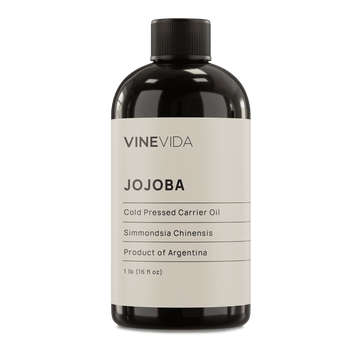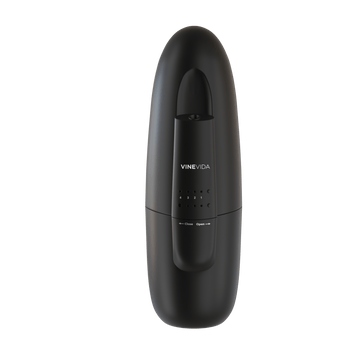Peppermint has been used for health purposes for several thousand years. Its use can be traced to ancient Greece, Rome, and Egypt. One of the oil's main constituents is L-Menthol or Menthol.
Today, the menthol in Peppermint Essential Oil can assist in alleviating issues with irritable bowel syndrome (IBS), other digestive problems, the common cold, sinus infections, headaches, and other conditions.
Peppermint Oil is also beneficial when used topically for headaches, muscle aches, joint pain, and itching. In addition, in Aromatherapy, peppermint oil is promoted for treating coughs and colds, reducing pain, improving mental function, and reducing stress.
Breathe in that Minty Freshness
Most commonly, Peppermint is used to sharpen the mind. It clarifies thinking and makes you feel alert, more focused, and switched in.
Peppermint invigorates, cools, and directs.
Most importantly, Peppermint is wakeful. Do not use it just before bed.
Peppermint for Digestion
There has been extensive research into the benefits of Peppermint Essential Oil for people suffering from conditions such as Irritable Bowel Syndrome (IBS), abdominal pain, diarrhea, and constipation. In addition, one of peppermint oil’s main constituents, Menthol, is considered an anesthetic and is often found in over-the-counter pain medications, such as cough drops and cooling creams.
In 2019, a review was completed on peppermint trials around people with IBS. The literature included 835 individuals diagnosed with IBS who used peppermint oil in capsule form versus a placebo. Twelve trials were reviewed and showed treatment with peppermint oil decreased abdominal pain and IBS symptoms. (Alammar, 2019)
Another review, completed in 2017, took a closer look at fourteen trials involving essential oils and patients with gastrointestinal issues. This review included 1927 patients between the ages of 0-18. The results concluded that peppermint oil assists in decreasing the duration, frequency, and severity of pain in children suffering from GI issues. It was also noted that peppermint oil and caraway could also be combined to assist with bloating and pain in the stomach associated with other GI tract issues.
If you suffer from abdominal issues, consider creating a blend of peppermint oil to massage your stomach.
Inhaling the oil is also extremely helpful for those with motion sickness or general nausea. Additionally, it is thought that inhaling peppermint can trigger a sense of fullness and may help curb appetites.
Recommended Reading: Peppermint Essential Oil for Beard Growth: Combat the Loss of Facial Hair
Peppermint Essential Oil for Pain
In addition to digestive issues, Peppermint Oil can be beneficial for other pain. Again, this is thanks to menthol as well as other compounds. Several studies have been conducted regarding Peppermint Oil and headaches or migraines.
This study includes 25 participants who had at least one year of being diagnosed with migraines. They were asked to apply a menthol gel to their skin. Participants reported that their pain was eased within two hours of application. (Borhani Haghighi 2015)
Another study involving 35 patients supported the benefits of Peppermint Oil for migraines. In this study, participants applied a blend of Peppermint Oil to their temples and forehead. The application resulted in less nausea, decreased light sensitivity, and increased pain relief. (St Cyr, 2015)
How to Use Peppermint for Colds
Relying on menthol as one of its main constituents, Peppermint Oil can assist in providing relief from a variety of respiratory issues, from the common cold to bronchitis. As a result, many over-the-counter products include menthol in their ingredients list.
If your head is feeling stuffy, or you can’t stop coughing, you can try an inhalation of peppermint oil. Pour hot water into a metal or glass bowl and add a few drops of the oil. You can also combine Rosemary or Eucalyptus Oil with Peppermint for additional benefits. Put a towel over your head and lean over the bowl. Be mindful to remain 10-12 inches above the bowl. Gently breathe in the steam, allowing the warmth to soothe and calm you.
Add 2-3 drops of Peppermint Oil to your diffuser, or apply a blend to your chest to help break up lung and chest congestion.
Recommended Reading: Is Peppermint Essential Oil Safe for Dogs? Here is Your Answer
Peppermint for Fevers
This is a crucial dimension of Peppermint Essential Oil. It is wonderfully healing and is excellent on sultry days or if you have a hot flush. That is, as long as you can bear being even more alert. Menopause can make you feel like you are already on a knife edge so we would step away from that. Neroli would e a better choice for cooling down menopausal gals.
It is very cooling, and so it will bring down fever fast. However,
Please don’t! It’s a dangerous thing to do.
The body pushes up the temperature when it wants to overcome a germ. This is because raising the temperature helps the white blood cells to surround and defeat a pathogen. If you bring the fever down, then you stop this process.
Fevers are often associated with seizures. However, these are down to the change in temperature rather than the fever itself. Forcing a fever down artificially puts the patient at risk of a seizure.
Again, please do not do this.
The best approach is to soak a face cloth in some body temperature water and simply apply that to their skin. Don’t chill them, and DO NOT USE PEPPERMINT FOR FEVERS.
Recommended Reading: Does Peppermint Essential Oil Repel Mosquitoes?
Benefits of Peppermint Essential Oil for Skin and Hair Care
Peppermint Essential Oil has unique properties, which can help your skin appear more youthful by tightening it. It also has a cooling effect that assists with irritations on the skin, such as itchy or inflamed skin. The oil can also assist with sun or wind burn pain thanks to its anti-inflammatory constituents. Chock full of antimicrobial components, Peppermint may help reduce acne, but it’s not a traditional choice. Lavender, Tea Tree, Vetiver, or Clary Sage would all be better choices.
Like many essential oils, Peppermint can irritate the skin, so care should be taken when using it for the first time or even consistently. Always dilute properly, less than 3% in adults, and be mindful of any reactions.
Peppermint Essential Oil is excellent for your hair and scalp. Thanks to its antiseptic and anti-inflammatory properties, it helps with dryness or itching related to dandruff. It also helps strengthen hair roots, resulting in decreased hair loss. The oil may also increase hair growth by stimulating follicles and increasing blood circulation, thanks to the menthol it contains. You can dilute it with a carrier oil or add a few drops to your shampoo to help improve circulation. A bonus is a refreshing smell to help energize you for the day ahead.
Recommended Reading: Is Peppermint Essential Oil Safe For Cats?
Safety Guidelines for Peppermint Essential Oil
Peppermint Essential Oil is intense and far more concentrated than other essential oils. Therefore, you should follow proper dilution to ensure safe use. For adults, dilution is 3% or less.
It is not advised to use Peppermint Essential Oil on children. Menthol slows respiration, and so it can become problematic for little ones. Perhaps try choosing different oils for children under six.
We would suggest avoiding Peppermint during pregnancy and breastfeeding.
If you are diffusing Peppermint in your home, be mindful that you are using it in an open space where humans and pets alike can come and go as they please. It is not recommended to diffuse more than two hours at a time.
Recommended Reading: Does Peppermint Oil Repel Mice?
DIY Recipes for Peppermint Essential Oil
Peppermint Foot Cream
Lovely refreshing foot cream to brighten your day.
- 1 cup Coconut Oil (Cocos Nucifera) - in solid form
- ½ cup 100% Aloe Vera Gel
- 5 drops Lavender Essential Oil (Lavandula Angustifolia)
- 2 drops Peppermint Essential Oil (Mentha Piperata)
- Add Coconut Oil to a glass bowl used for mixing. Oil should be at room temperature.
- Add Aloe Vera gel to the bowl.
- Add 20 drops of each Essential Oil.
- Use a stand or hand mixer to mix the blend. This will only take a couple of minutes and should create a white, fluffy cream.
- This recipe makes about 1-1/2 cups of Peppermint foot cream. That’s enough to fill two 8 oz jars, a little more than three-quarters full each.
- You can store the foot cream in the refrigerator to increase shelf life.
- This blend of Lavender and Peppermint can help clear your mind and relax your sore feet.
Headache Rollerball Recipe
- 9 ml Coconut Oil (Cocos Nucifera)
- Glass Rollerball Bottle
- 1 drop of Peppermint Essential Oil (Mentha Piperata)
- 3 drops Lavender Essential Oil (Lavandula Angustifolia)
- 1 drop of Eucalyptus Essential Oil (Eucalyptus Globulus)
Apply onto the temples and the back of the neck during an attack. Do not use it in the evening.
Safety: Not suitable for use during pregnancy or by children.
Conclusion
What is Peppermint Oil for? The list of uses is long, but includes such things as headaches, muscle aches, treating coughs and colds, reducing pain, and reducing stress. It can be used topically or inhaled, depending on your needs. It is an excellent choice for your first aid kit at home; just remember to dilute it properly.
Peppermint Oil is potent and should not be used directly on the skin. Do not use it within the first sixteen weeks of pregnancy. Do not use it in children under six years old.
Reference
- The impact of peppermint oil on the irritable bowel syndrome: a meta-analysis of the pooled clinical data
- Efficacy and Tolerability of STOPAIN for a Migraine Attack
- Cutaneous application of menthol 10% solution as an abortive treatment of migraine without aura: a randomised, double-blind, placebo-controlled, crossed-over study
- Peppermint Oil | NCCIH.















